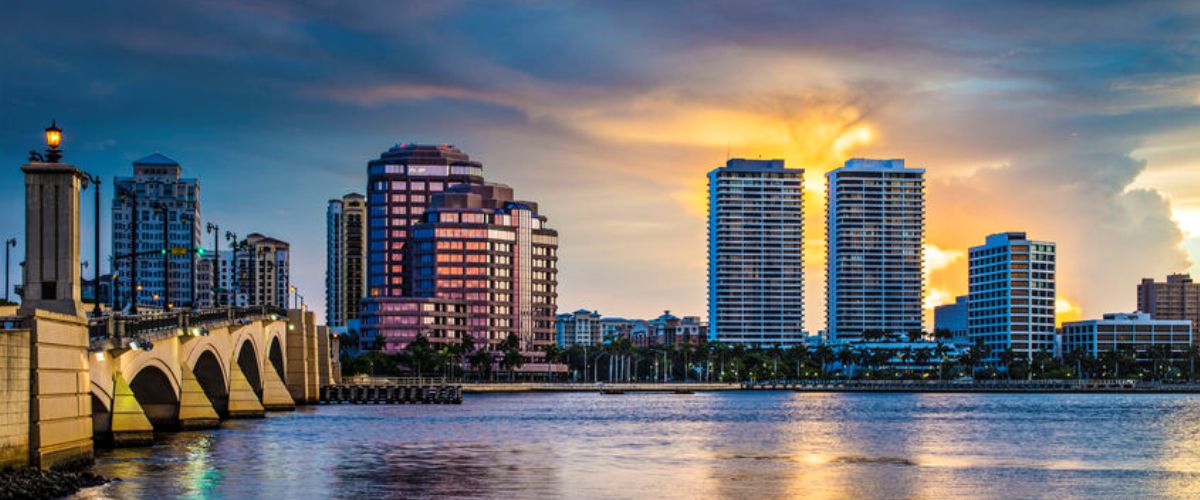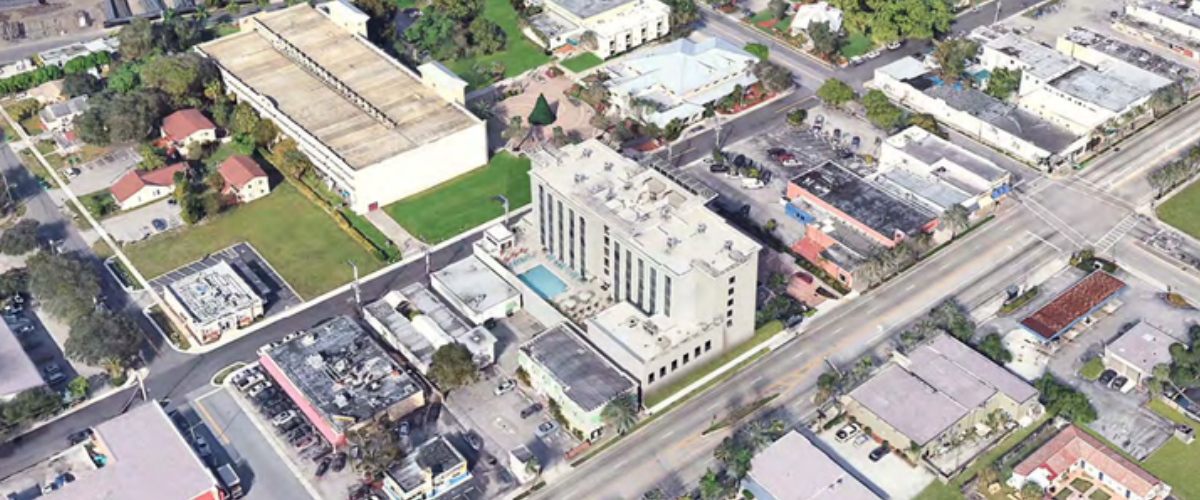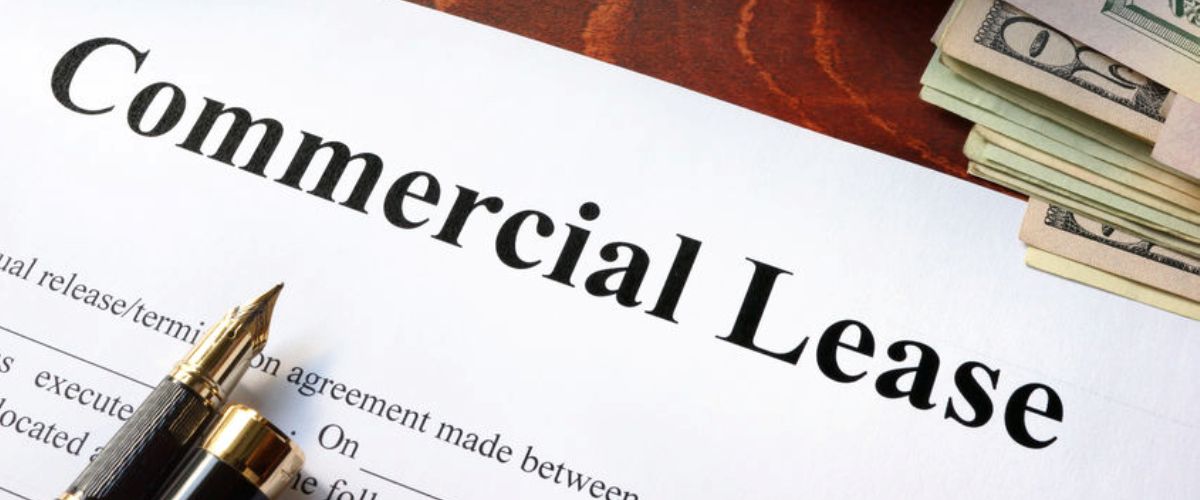Cash me out now?
Some West Palm Beach investors and business owners are selling real estate holdings to buyers hot on the downtown, including to businesses and investors coming to the city or expanding their presence here.

“Exterior of Glidden Spina building in West Palm Beach. (PHOTO CREDIT: Rob Woodham of Glidden Spina)
A prime example is Glidden Spina + Partners Architecture Interior Design Inc. In 2014, the firm paid $1.4 million for an old, empty building, the former Hopkins Marine Hardware store at 207 6th St.
After rehabbing the space, the firm sold the building for a whopping $6.8 million two months ago. The unnamed buyer is a company that plans a family office there, a part of town branded the Flagler Financial District.
Meanwhile, longtime West Palm Beach investor Jonathan Gladstone in recent months quietly sold two properties on Clematis Street for more than $6 million. A longtime local real estate investor, Gladstone said he’s starting to see the economy flash warning signs — even as outside investors continue to clamor for a piece of Florida real estate. In addition to his belief that the real estate market may be at its peak, Gladstone also is concerned about the stock market’s recent volatility and uncertainty over tariffs.
“I’ve been here for 35 years. It’s time for me to change things up,” Gladstone said of his Clematis Street divestments.
However, Gladstone said he still owns 114 Clematis Street in West Palm Beach, where Pizza Girls just signed another five-year lease.
With the continued influx of wealthy residents and investors fleeing high-tax states, not everyone is bearish on West Palm Beach. In fact, other property owners think there’s still plenty of room for new deals.
 Up for sale is the longtime home of Pioneer Linens, the upscale home furnishings store at 210 Clematis Street. The family that runs the store also owns the building has the property listed for sale for $7 million. The price includes a prime, store-owned parking lot across the street at 209 Clematis Street.
Up for sale is the longtime home of Pioneer Linens, the upscale home furnishings store at 210 Clematis Street. The family that runs the store also owns the building has the property listed for sale for $7 million. The price includes a prime, store-owned parking lot across the street at 209 Clematis Street.
In addition to the vast downstairs retail space, the 15,383-square-foot Pioneer Linens building, constructed in 1925, has upstairs storage space, too. Pioneer Linens building is a family-owned retailer from the prior century still doing business downtown, a rarity nowadays.
In a recent telephone interview, owner Penny Murphy didn’t want to talk much about the listing, but she said the store isn’t shutting down. The listing more is a testing of the market’s appetite for the property, at a time when Murphy is fairly fed up with the constant construction and disruption along Clematis Street.
Lately, the city has been working to turn the eastern end of Clematis Street into the same curb-less look done with the 300 block, in a bid to make the street more pedestrian friendly.
If the building sells for the price Murphy wants, she indicated a Pioneer Linens store would stay in business downtown, but she wasn’t specific. Given the sales activity in downtown lately, it’s possible Murphy could get her price.
Take the Glidden Spina building, which wasn’t even listed for sale. After buying the rundown building, Keith Spina spent $700,000 to design a cool, funky space that features a coffee bar and pool table. The property’s location is just steps from Flagler Drive and the waterfront.
Kelly Smallridge, president of the Business Development Board of Palm Beach County, said she was contacted by a broker representing the owner of a family office from the Northeast. The family office was looking around for space downtown but was keen for any other buildings that were available. Spina was open to a visit, Smallridge said.
Smallridge recalled that when Spina first bought the 6th Street marine supply store, he was ribbed about building out the firm in a 1950s-era building on a side street that no one even knows about. But who’s laughing now? The family office officials took one look at the Glidden Spina space, and that was that.
“They sent someone over who said, ’We’d love to have your building — and everything in it, ” Spina said.
As for Gladstone, the sale of the 537 and 539 Clematis building, now home to MedMen marijuana dispensary, caps years of frustration with the street. He tried for years to find a suitable retail tenant for the space, first bringing in Habatat Galleries and later Footwear & More shoe store.
Recently, the city changed zoning rules downtown to allow for non-retail uses on Clematis. That allowed him to lease the property to MedMen. Last month, a California-based real entity linked to a real estate investment trust bought the building.
The changed zoning rules also are giving a new use for the former Mac Fabrics building, which Gladstone recently sold an investment group. The 426 and 428 Clematis Street building will be the new West Palm Beach headquarters of Suffolk Construction,which built The Bristol luxury condominium on Flagler Drive.
Jeffrey Attanasio, Suffolk vice president of operations, said the company is looking forward to having a visible presence downtown and being part of the urban core.
“We’re very excited about it,”Attanasio said. “The 9,000 square foot space, which features tall ceilings, is being designed to allow for collaboration among the office’s 40 employees.”
He expects the offices to be completed by year-end. Suffolk’s new Clematis Street office will be convenient to the Virgin Trains/Brightline station, which employees already use to go to and from the Miami office.
“In addition, employees now working in the company’s Phillips Point office space are excited about being closer to lunch, art and entertainment options,” Attanasio said.
Suffolk isn’t the only company seeking to expand its presence downtown. Big Time Restaurant Group just bought another office next to its existing suite of offices at 400 Clematis Street.
“The restaurant company, which owns Rocco’s Tacos, City Cellar, Grease, Louie Bossi’s and Elisabetta’s, among other eateries, needs more space as it continues to expand operations,” said Big Time partner Todd Herbst.
Big Time’s second-floor offices are above the CVS on the southwest corner of Clematis Street and Dixie Highway. In October, Big Time will close on the purchase of a $1.1 million office that features 3,000 square space, substantially adding to its existing 5,000 square foot operation.
“With 17 restaurants, we need more space to put more people in human resources and accounts payable,” Herbst said.
Once the deal closes, Big Time plans to punch through the wall to create the bigger office complex.
As for Spina, he’s busy designing his new office space. He just leased 8,000 square feet in a ground-floor space part of Flagler Banyan Square, the mixed-use project being along Flagler Drive. The space is in ground-floor retail in the Oversea apartment complex on Olive Avenue. In addition to the apartments, Flagler Banyan Square will feature a hotel dubbed The Ben, plus a separate building that will house another Big Time-branded Italian restaurant.
Spina said he’s under the gun to get the space built out by a Dec. 1 move-in date. But he’s philosophical about the move.
“The city always is seeking to bring new business to the downtown,” Spina said. “And the story of his architecture building is one example of how it can be done.”
As a result, he’s bullish on the downtown’s prospects.
“I bought an old building, invested in it and brought 30 people to work there everyday,” Spina said. “Now we’ve got a company bringing 20 people and we’re going to expand into a new building. ”
Source: Palm Beach Post














